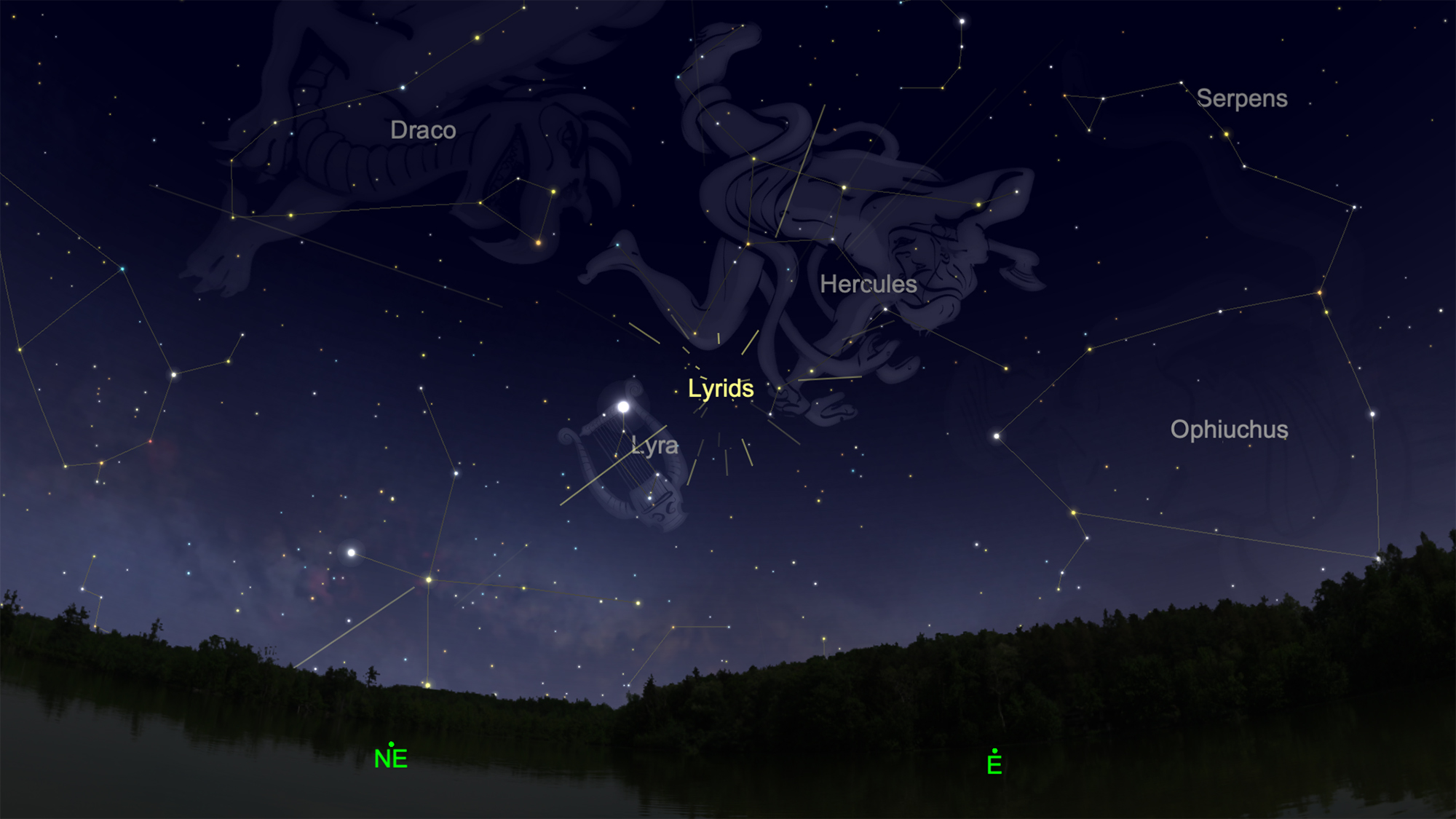The Lyrid meteor shower of 2020 peaks tonight!
You may not be able to see the moon in the sky tonight, but if you look up for long enough at a dark, clear sky, you may catch some "shooting stars."
The annual Lyrid meteor shower peaks overnight tonight (April 21) and into the early hours of Wednesday (April 22), less than a day before the new moon. Without any glaring moonlight to obstruct the view, skywatchers will have an excellent view of the Lyrids this year — weather permitting.
From a dark, clear sky, observers in the Northern Hemisphere can expect to see as many as 10 to 20 meteors per hour during the shower's peak. Because the shower is active from mid- to late April, some Lyrid meteors may still appear before and after the peak, but tonight will be your best chance to see them.
Video: Fireballs! Lyrid meteors captured by NASA all-sky cameras
Related: Lyrid meteor shower 2020: When, where & how to see it
The shower's peak will last for a few hours, but maximum activity is expected to occur around 2 a.m. EDT (0600 GMT) on Wednesday, according to the Observer's Handbook of the Royal Astronomical Society of Canada. That's about 20 hours before the moon reaches its new phase at 10:26 p.m. EDT (0226 GMT). That tiny sliver of a nearly-new moon still won't be visible in the night sky, because the moon will be below the horizon. In New York City, for example, the moon sets at 6:23 p.m. local time tonight and rises again at 5:50 a.m. tomorrow.
To spot the Lyrids, find a dark sky away from light pollution and look up — ideally while lying on your back, so you don't strain your neck. Lyrid meteors will appear to originate from a point in the sky on the border between the constellations Hercules and Lyra (home of the bright star Vega). This apparent point of origin, known as the meteor shower's radiant, will be in the northeast after sunset and almost directly overhead in the hours before dawn.
Once you've located the radiant, don't just stare at that spot all night. Longer streaks tend to appear farther from the shower's radiant, so you might miss the best meteors if your eyes are glued on that singular spot all night (also, focusing on a single point in the dark for so long might strain your eyes).
Breaking space news, the latest updates on rocket launches, skywatching events and more!
So, since lying down on the ground is both more comfortable and will give you the best view of the entire sky, we suggest you kick back and relax to make the most of this brilliant, cosmic event.
Editor's note: If you snap a great photo Lyrid meteor shower that you'd like to share for a possible story or image gallery, send photos, comments and your name and observing location to spacephotos@space.com.
- The most amazing Lyrid meteor shower photos of all time
- How to see the best meteor showers of 2020
- How meteor showers work (infographic)
Email Hanneke Weitering at hweitering@space.com or follow her @hannekescience. Follow us on Twitter @Spacedotcom and on Facebook.
OFFER: Save 45% on 'All About Space' 'How it Works' and 'All About History'!
For a limited time, you can take out a digital subscription to any of our best-selling science magazines for just $2.38 per month, or 45% off the standard price for the first three months.

Hanneke Weitering is a multimedia journalist in the Pacific Northwest reporting on the future of aviation at FutureFlight.aero and Aviation International News and was previously the Editor for Spaceflight and Astronomy news here at Space.com. As an editor with over 10 years of experience in science journalism she has previously written for Scholastic Classroom Magazines, MedPage Today and The Joint Institute for Computational Sciences at Oak Ridge National Laboratory. After studying physics at the University of Tennessee in her hometown of Knoxville, she earned her graduate degree in Science, Health and Environmental Reporting (SHERP) from New York University. Hanneke joined the Space.com team in 2016 as a staff writer and producer, covering topics including spaceflight and astronomy. She currently lives in Seattle, home of the Space Needle, with her cat and two snakes. In her spare time, Hanneke enjoys exploring the Rocky Mountains, basking in nature and looking for dark skies to gaze at the cosmos.



